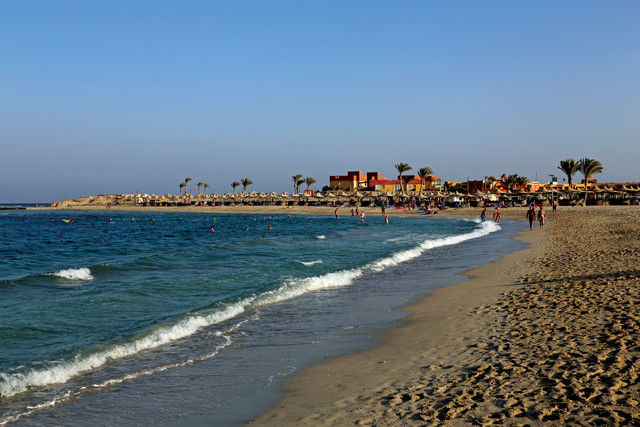
by Mary Caperton Morton Monday, September 21, 2015

Cannon-like blasts sometimes accompany small earthquakes in the Abu Dabbab region of Egypt along the coast of the Red Sea. Credit: Marc Ryckaert, CC BY 3.0.
For decades, people living along Egypt’s Red Sea coast have reported hearing loud blasts accompanying the small earthquakes that regularly jolt the Abu Dabbab region. And there is evidence the sounds have been occurring for much longer: Abu Dabbab means “the Father of Knock” in Arabic, hinting at a tectonic mystery at least as ancient as the name of the long-inhabited coastal region. Now, scientists are offering a novel explanation for the uniquely noisy seismic events, and their discovery is revealing new information about the underlying structure of the Red Sea region.
To investigate the booming phenomenon, Sami El Khrepy of King Saud University in Riyadh, Saudi Arabia, and colleagues combined earthquake data compiled by the Egyptian National Seismic Network with seismic tomography to develop a 3-D map of the region’s subsurface. They found that Abu Dabbab’s frequent earthquakes are generated by an active fault lying beneath a 10-kilometer-thick block of old, cold volcanic rock. Lubricated by water and other fluids from the Red Sea, this block slides overtop of the fault, amplifying the sounds generated by the seismic movement and broadcasting them at the surface as audible high-frequency waves, the team reported in the Bulletin of the Seismological Society of America. (Seismic wave frequencies are typically too low to be heard by humans.)
Earlier studies had suggested that the Abu Dabbab earthquakes were caused by magma rising through the crust, but the new report “found that a volcanic origin of the seismicity is unlikely,” and that “the area is not expected to be subjected to volcanic hazard,” El Khrepy said in a statement. The last major earthquakes in the Abu Dabbab area, magnitude-5.1 and magnitude-6.1 tremors, occurred in 1984 and 1955, respectively.
© 2008-2021. All rights reserved. Any copying, redistribution or retransmission of any of the contents of this service without the expressed written permission of the American Geosciences Institute is expressly prohibited. Click here for all copyright requests.